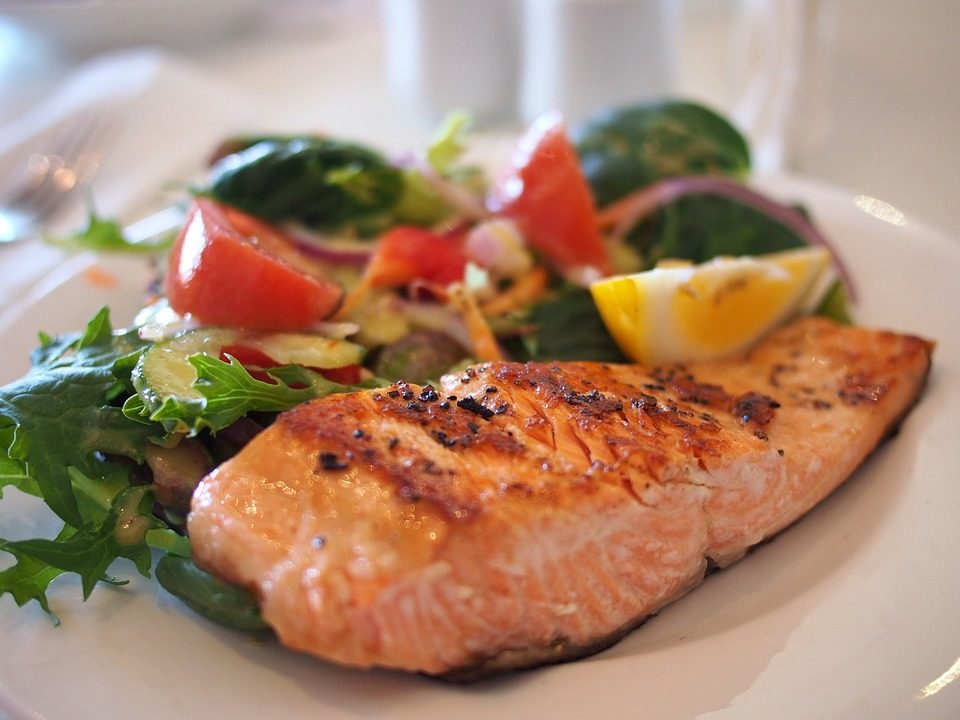Farmed Seafood Health Myths: Why We Should Be Eating More, Not Less
Myth 1. Farmed seafood isn’t healthy to eat
Reality Check: Aquaculture is just as healthy, if not healthier, than wild seafood

The diets of farmed seafood are carefully monitored to ensure the fish produced are safe and healthy to consume. Regulations surrounding aquaculture practices are among the most stringent in the world (1). Fisheries strive to produce high quality farmed seafood while lessening their impact on the environment.
One common health debate concerning aquaculture is whether farmed fish have the same amount of omega-3 fatty acids as wild-caught fish. Omega-3s, notably alpha-linolenic acid (ALA), docosahexaenoic acid (DHA), and eicosapentaenoic acid (EPA), are healthy unsaturated fats that have been linked to maintaining healthy blood pressure and normal brain function (2). New studies suggest that omega-3s may even lower the risk of several chronic diseases, including breast cancer and cardiovascular disease (3). ALA is found in plant oils whereas DHA and EPA are commonly found in seafood (3). Cold water fatty fish—such as salmon, mackerel, tuna, herring, and sardines—contain particularly high amounts of these omega-3s (3). For more information on omega-3s, check out the Health Ambition blog post, “30 Omega 3 Foods You Should Add To Your Diet Today!”
In the wild, fish get their omega-3s fatty by consuming smaller fish (4). Farmed fish are similarly fed high protein feed pellets that provide the same omega-3s (5). Farmed fish usually contain higher levels of DHA and EPA than wild-caught fish, but these exact levels depend on the composition of the specific feed (5).
Fish with a lower fat content—such as bass, tilapia and cod—contain lower levels of fatty acids. Even with lower omega-3 levels, these fish and other shellfish are still excellent sources of low-fat protein (6).
Myth 2. Fish are farmed in dirty water and crowded conditions
Reality Check: Fish prefer to live together
Many fish naturally live in schools or shoals, even when there is a lot of open space (7). Although conditions may appear cramped, most fish instinctually group together. It is also worth noting that murky water is not always dirty water. Murky water is completely normal and healthy for fish that prefer shallow, tropical habitats (8).
Myth 3. Disease and parasite outbreaks can spread rapidly
Reality Check: Fisheries are monitored closely to prevent exactly this from happening
Disease and parasite outbreaks are normal for wild fish, particularly for fish that prefer to travel and live with large groups. In fisheries, farmers track the health of their fish and can take immediate action to prevent illness from spreading (1). One of the largest problems for farmed salmon is sea lice, particularly in areas where sea lice is commonly found in the wild. However, this risk has been greatly reduced by improving the water quality and closely monitoring the environment in salmon fisheries (1).
Myth 4. Farm-raised fish are full of antibiotics
Reality Check: With the successes of vaccines, antibiotics are rarely used
Fisheries use vaccinations to protect against major diseases that have historically caused problems for the farmed seafood industry (1). Other diseases can simply be prevented by following good management practices and using feed designed to protect the immune system. In fact, the U.S. Food and Drug Administration has only approved three antibiotics and their use is heavily regulated (1). Fish treated with antibiotics are monitored to ensure there are no traces of the antibiotic left in the fish before they can be returned to the larger group.
Myth 5. Farmed salmon is full of harmful “color-added” dyes
Reality Check: Salmon’s trademark pink coloring is caused by their diet, both in fisheries and in the wild
Salmon get their pink coloring by consuming food, often krill and other shellfish, that contain pigments called carotenoids (1). Carotenoids, specifically astaxanthin and canthaxanthin, serve as antioxidants and sources of vitamin A for salmon in the wild. Farmed salmon’s feed is supplemented with natural and/or synthetic astaxanthin (1). Fisheries are just giving salmon the same carotenoids they would find in the wild.
- NOAA Fisheries
- Harvard Health Publications – Foods linked to better brainpower
- National Institutes of Health – Omega-3 Fatty Acids
- Harvard Health Publications – Finding omega-3 fats in fish: Farmed versus wild
- National Institutes of Health – Omega-3 Fatty Acids
- Washington State Department of Health – Health Benefits of Fish
- Deep Trekker – 10 Common Misconceptions Surrounding Aquaculture
- Sustaining Ethical Aquaculture Trade – Aquaculture Myths
This post was created by GSA Summer 2017 Intern Tyler Work.




